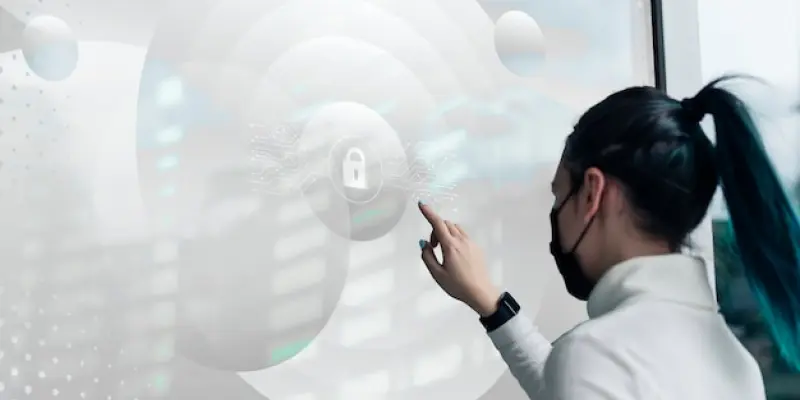In the current digital landscape, Advanced Persistent Threats (APTs) pose a formidable challenge to enterprises globally. Distinguished by their sophistication, these cyberattacks employ stealth and precision, orchestrated by adversaries with substantial resources, often linked to nation-states or organized crime syndicates. What sets APTs apart is their ability to infiltrate networks over prolonged periods, thereby avoiding detection by traditional security measures. Unlike conventional threats, APTs maintain a persistent presence to siphon sensitive data or disrupt operations strategically, posing an ongoing risk that requires comprehensive security strategies.
Anatomy and Tactics of Advanced Persistent Threats
A Comprehensive Look at APT Operations
At the heart of an APT is a campaign-like approach, markedly distinct from a typical one-off cyberattack. These threats unfold through a series of coordinated efforts aimed at gathering intelligence, infiltrating, and maintaining access to targeted networks. APT actors meticulously invest in reconnaissance to pinpoint high-value targets and craft detailed maps of their digital infrastructures. Initial access is often gained through sophisticated means such as spear-phishing, exploiting zero-day vulnerabilities, or compromising supply chains. The SolarWinds incident serves as a notable example of such methodologies. APTs excel in lateral movement within networks, utilizing genuine user credentials and “living off the land” tactics to mask their presence while they exfiltrate valuable data. These attacks primarily aim to extract critical information, whether it be intellectual property, customer data, or private communications. Secondary objectives may include sabotage or extortion; however, the principal goal remains covert long-term network access. The enduring challenge for organizations is that APT actors’ methodologies are constantly evolving, adapting new technologies and techniques to stay ahead of security responses.
Emerging Trends in APT Strategy
Understanding how APT strategies are evolving is crucial for developing effective defenses. Emerging trends reveal an increased reliance on artificial intelligence (AI) and machine learning technologies by APT groups. These technologies enhance the automation of reconnaissance processes, refine phishing techniques, and dynamically evolve attack strategies, thus outsmarting traditional security controls. AI-driven APTs progress through attack cycles much faster, complicating detection and immediate responses, illustrating the severity of the threat.
The shift of enterprises towards cloud infrastructure has also influenced APT actors to recalibrate their strategies, with misconfigured cloud environments becoming significant targets. Combined with the proliferation of Internet of Things (IoT) devices and the rise of remote work devices, these factors collectively enlarge the attack surface for adversaries. Furthermore, the rampant exploitation of zero-day vulnerabilities, which have been on the rise, indicates an urgent need for updated and robust security patches. These evolving conditions necessitate constant vigilance and adaptation to keep potential threats at bay.
Detection and Response Mechanisms Against APTs
Technologies and Techniques for Early Detection
One of the most alarming features of APTs is their ability to remain undetected for long periods. Dwelling time—the duration between initial compromise and detection—often spans several months, allowing threat actors to operate seamlessly. Early detection relies heavily on sophisticated technologies and skilled cybersecurity personnel. Security Information and Event Management (SIEM) systems, Endpoint Detection and Response (EDR), and Network Detection and Response (NDR) are critical components in today’s cybersecurity arsenal. These systems leverage advanced behavioral analytics, machine learning, and ongoing threat intelligence to identify potential signs of APT activities. The use of frameworks such as MITRE ATT&CK allows security teams to connect unusual behaviors to known tactics used by adversaries, thus expediting response efforts. Nevertheless, detection remains challenging, as attackers continually modify their code, employ encrypted communications, and establish numerous backdoors. Consistent monitoring, established threat-hunting practices, and regular penetration tests are vital to preemptively identify and mitigate these deep-seated risks.
Implementing an Effective Response Strategy
Response strategies against APTs must be swift and coordinated to minimize damage. Well-prepared Incident Response Teams (IRTs) are essential, equipped with comprehensive playbooks for APT-specific incidents. Frameworks such as NIST SP 800-61 and ISO/IEC 27035 provide invaluable guidance for navigating through all stages of incident management—from detection to the full recovery cycle.
Containment strategies should focus on isolating affected systems, revoking compromised credentials, and employing network segmentation to prevent further infiltration. Post-incident analysis is critical for understanding the full scope of the breach, identifying root causes, and integrating lessons learned actively into future defense strategies. Regular tabletop exercises and incident response drills reinforce organizational readiness and ensure staff are equipped to handle future threats.
Strengthening Defense Through a Unified Approach
Layered Security Frameworks for Enhanced Protection
Given the complex nature and persistence of APTs, adopting a layered security strategy stands paramount. Zero Trust Architecture (ZTA) offers a robust framework by adhering to the adage “never trust, always verify.” Through continuous user and device authentication and stringent network segmentation, Zero Trust effectively mitigates the risk of unauthorized access. Studies corroborate that such paradigms could have reduced or even prevented incidents similar to the SolarWinds breach, highlighting their efficacy.
Implementing tools like Endpoint Detection and Response (EDR) and Extended Detection and Response (XDR) enriches organizational defenses by providing real-time visibility and reaction capabilities at the endpoint level. These tools employ advanced analytics and threat intelligence to address known and novel threats, ensuring a well-rounded security posture. By fostering interoperability with other security platforms, EDR and XDR systems create a cohesive defense mechanism against the intricate machinations of APT actors.
Collaborative Defense and Future Preparedness
APTs are recognized for their sophistication, employing stealthy techniques and precise tactics. These elaborate cyberattacks are often orchestrated by adversaries with extensive resources, frequently linked to nation-states or organized crime groups. What makes APTs distinct is their ability to penetrate networks over extended periods, eluding traditional security systems. Unlike standard threats, APTs maintain continuous presence, aiming to extract sensitive data or deliberately disrupt operations. This ongoing threat demands robust and holistic security strategies to mitigate risks. Businesses must prioritize defense mechanisms that can detect and counteract APTs, focusing on proactive threat modeling and continuous monitoring. In this evolving cyber landscape, the fight against APTs requires heightened vigilance and adaptive security responses to safeguard vital information and maintain operational integrity.

